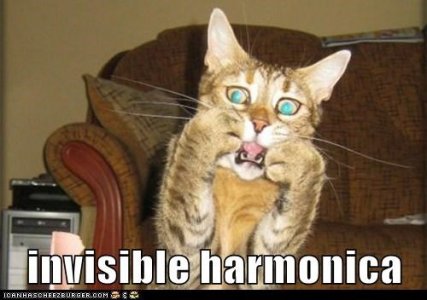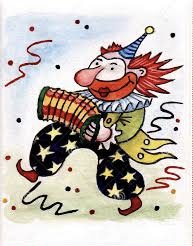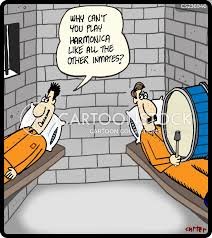You are using an out of date browser. It may not display this or other websites correctly.
You should upgrade or use an alternative browser.
You should upgrade or use an alternative browser.
Doing No Harm With The Harmonica
- Thread starter Meanderer
- Start date
fmdog44
Well-known Member
- Location
- Houston, Texas
The Spike Jones Band
Timewise 60+
Senior Member
I wish you luck on your surgery! Music is so important, and few people can create good music...remember that as you are recovering!I have played harmonicas since I was seven years old and became quite proficient up to the time of loosing my hearing. I could do it all----pop,jazz,classical. I performed Malaguena < Peg o My Heart etc. before audiences. I am hoping that once I have my Cochlear Implant I will be able to play again somewhat.
PeppermintPatty
🐢. 🐳. 🐢
- Location
- Canada
Mr. Ed
Be what you is not what you what you ain’t
- Location
- Central NY
I saw them at Georgia Tech
JustDave
Well-known Member
When I'm driving, around 80% of my listening is to the Blues Channel on satellite radio. The harmonica is common to the blues in a way that it is not in other genre. When there's a harmonica, I really pay attention. Sometimes it just lends a hand to the other instruments, and sometimes it dominates. It's such an unusual instrument, and playing one takes some practice. I admire those to have mastered it.
Meanderer
Supreme Member
Lon's post is from 2017. I think he has passed away.I wish you luck on your surgery! Music is so important, and few people can create good music...remember that as you are recovering!
JustDave
Well-known Member
Time has a way of doing that. May he rest in peace.Lon's post is from 2017. I think he has passed away.
oscash
Senior Member
- Location
- Sydney - Australia
My daddy played the harmonica when I was little and I miss it. I still have his old harmonica somewhere.
My Dad played the harmonica and the Ukulele. He loved a party, and we usually had a sing-along at least once a month during the hot summer evenings, some of the neighbours used to come over as well.
Pappy
Living the Dream
Paco Dennis
SF VIP
- Location
- Mid-Missouri
This looks like a "normal" harmonica. How does he do it?
I asked Google...
What kind of harmonica does Buddy Greene use?

I use and endorse Hohner harmonicas. The diatonic models I use include: Golden Melody, Marine Band, and Meisterklasse, and one Special 20 that's been factory tuned to a D harmonic minor (used on "Bubba, The Wandering Gypsy", Harmonica Anthology).
I asked Google...
What kind of harmonica does Buddy Greene use?
I use and endorse Hohner harmonicas. The diatonic models I use include: Golden Melody, Marine Band, and Meisterklasse, and one Special 20 that's been factory tuned to a D harmonic minor (used on "Bubba, The Wandering Gypsy", Harmonica Anthology).
Meanderer
Supreme Member
Physics, phonetics, and physiology of the diatonic harmonica
October 01 1999
"The harmonica is arguably the most widely played instrument in the world, yet there is a surprising scarcity of published studies of its acoustics or physical dynamics. The typical diatonic harmonica and the kinematics of its free reeds are described. The vibration of the reeds, naturally, when producing a bend, and when speaking as an overblow or overdraw is discussed and investigated by simple stopping of the reeds, by videostroboscopic analysis, and by high‐fidelity displacement measurements. The reeds of the ten‐hole harmonica can be made to vibrate at varying frequencies depending on the size and morphometry of the players vocal tract. Three different modes of speaking from each hole and its pair of reeds are revealed and studied: first, naturally in a closing mode, either blown or drawn; second, as a bend, either blown or drawn, with pitch in the interval between the two notes in the hole; and third, as an overblow or overdraw in an opening mode with a pitch outside the interval between the two natural notes of the hole. This dynamic interaction allows the player to speak with the instrument perhaps as with no other."
October 01 1999
"The harmonica is arguably the most widely played instrument in the world, yet there is a surprising scarcity of published studies of its acoustics or physical dynamics. The typical diatonic harmonica and the kinematics of its free reeds are described. The vibration of the reeds, naturally, when producing a bend, and when speaking as an overblow or overdraw is discussed and investigated by simple stopping of the reeds, by videostroboscopic analysis, and by high‐fidelity displacement measurements. The reeds of the ten‐hole harmonica can be made to vibrate at varying frequencies depending on the size and morphometry of the players vocal tract. Three different modes of speaking from each hole and its pair of reeds are revealed and studied: first, naturally in a closing mode, either blown or drawn; second, as a bend, either blown or drawn, with pitch in the interval between the two notes in the hole; and third, as an overblow or overdraw in an opening mode with a pitch outside the interval between the two natural notes of the hole. This dynamic interaction allows the player to speak with the instrument perhaps as with no other."






